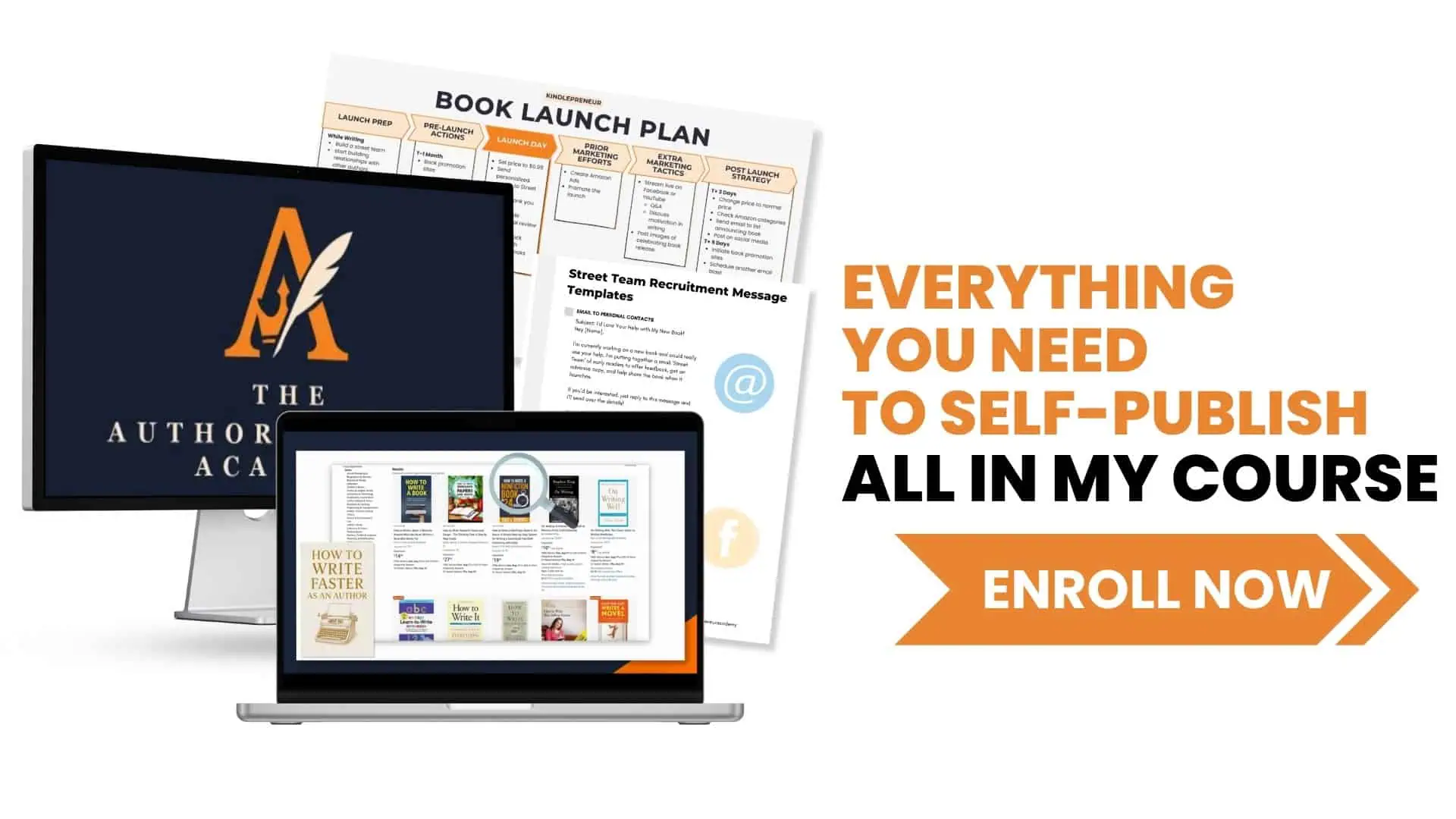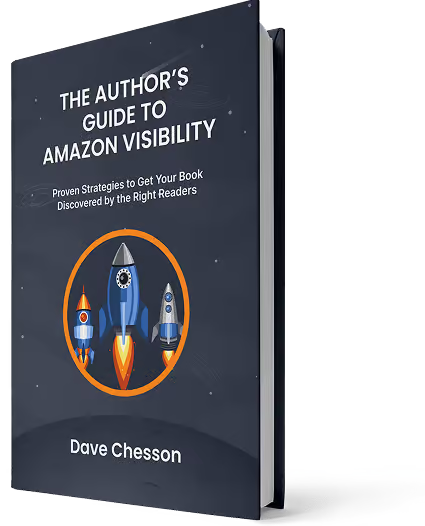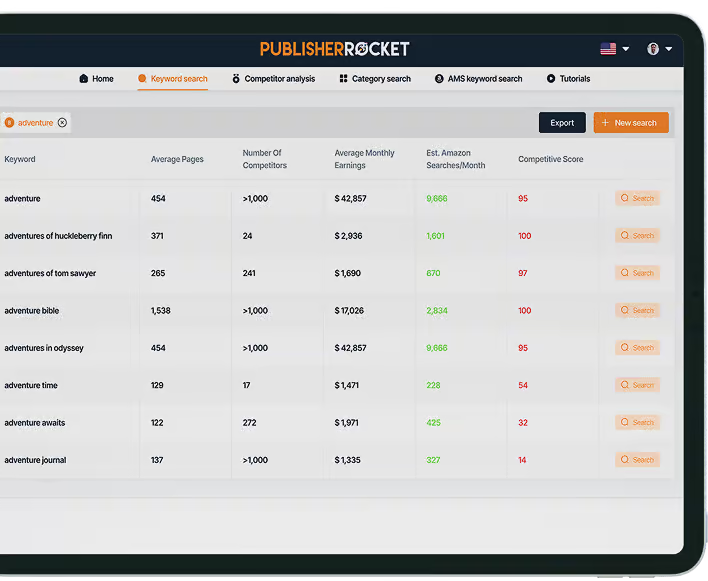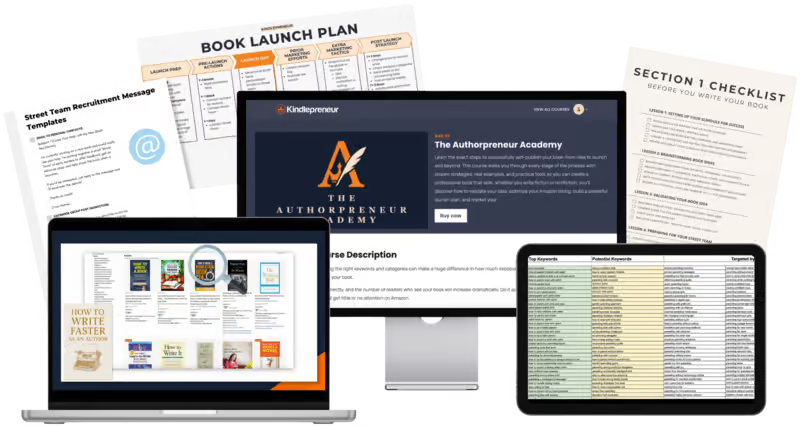Picture this:
You’re an author with a book (or two) under your belt. Maybe you’re thinking about creating an online course, selling your books directly, or building a thriving community of engaged readers.
The problem?
It’s a tech nightmare.
You need a website. An email list. A sales funnel. A social media scheduler so you can connect with your audience. Maybe a place to host your courses or a store to sell merch. Oh, and let’s not forget a blog.
Before you know it…
You’re juggling half a dozen subscriptions, bleeding cash every month, and wrestling with a Frankenstein-like system of third-party apps and integrations.
This is the pain point that a platform called Pubfunnels hopes to solve for authors and publishers.
In this article, I’ll break down Pubfunnels, share my thoughts, and try to help you decide if it’s a good solution for you.
We’ll start by addressing the elephant in the room…
What Qualifies Me to Talk About Pubfunnels?
I’ve been “juggling tech” for over a decade.
Name a digital marketing tool and there’s a good chance I’ve used it — plus several of its competitors — as my daily driver.
And while building “tech stacks” is a pain for most people, I actually like it. I enjoy researching the best tools, hand selecting them, and making sure all the puzzle pieces fit together.
This background and predilection makes me strangely qualified to review an “all-in-one” platform like Pubfunnels because:
- I know what a good tech stack is supposed to do, and
- I don’t have “skin in the game” — I’m a DIYer who’s not part of Pubfunnels’ target audience, so I’m not looking at the platform with rose-colored glasses hoping, praying it can solve my needs.
Will I be using Pubfunnels for my own website? Probably not.
But can I thoroughly review Pubfunnels and help other writers and authors decide if it’s a good fit for them? Absolutely.
So, for the past month, I've put Pubfunnels through its paces. I tested every feature, big and small. I even hopped on a Zoom call with Ray Brehm, the company's founder, so I could ask questions and pick his brain.
And today, I'm going to share with you my thoughts on the platform, both the good and not-so-good.
Let's dive right in.
What is Pubfunnels? (And Why Should You Care?)

Pubfunnels bills itself as an all-in-one business hub built for authors, by authors.
This means that, unlike generic funnel builders or website platforms like ClickFunnels or Kajabi, it’s designed with the specific needs of writers in mind.
According to Ray, its goal is to be a Swiss Army Knife of sorts for “authorpreneurs” — everything required to build, grow, and monetize your platform in one place.
And to that end, Pubfunnels lets you:
- Build unlimited websites and sales funnels (no coding required)
- Start a blog instantly (without WordPress headaches)
- Create and sell courses, memberships, and coaching programs
- Automate email & SMS marketing from one dashboard
- Schedule social media posts (directly from the platform)
- Set up workflows to automate book launches, webinar sign-ups, and more
- Manage all customer conversations in one inbox
- Sell merchandise with built-in Printful and Shopify integrations
- Track and respond to Google reviews (for reputation management)
It aims to do quite a lot, in other words.
In a moment, we’ll go over many of these in more depth.
But first…
Who is Pubfunnels For? (And Who Shouldn’t Use It?)
Before I share what I like (and don’t like) about Pubfunnels, let’s talk about who should use it (and who shouldn’t).
(There’s no sense in reading a review for a platform that isn’t a fit for you, right?)
In short:
If you’re an author who’s tired of piecing together multiple tools and just wants everything in one place, Pubfunnels is built with you in mind.
So, that includes:
- Authors who want to sell books directly (without relying on Amazon alone)
- Writers looking to monetize their audience with courses, coaching, memberships, or merchandise
- Indie authors who need a professional website (without hiring a developer)
- Creators who want to automate their marketing without a PhD in tech
- Aspiring authors who want to build their platform before they launch
That said, you should skip Pubfunnels if:
- You only want a basic blog with no plans to monetize
- You’re not interested in advanced marketing strategies like email marketing, funnels, or automations
- You prefer using multiple tools (and don’t mind managing integrations)
That last bullet describes me.
If it also describes you, or if you’re in the “only want a basic blog” or “not interested in advanced” camps, you can safely skip the rest of this Pubfunnels review.
But if you’re in the former group…
If you’re a writer looking for a one-stop business hub that can handle “all the things”…
Keep reading.
What I Like About Pubfunnels
In no particular order:
1. Unlimited (and Free) Live Support via Zoom
Well, I say “no particular order,” but having unlimited live support over Zoom — for free — is definitely my favorite thing about Pubfunnels.
This simply isn't something you see offered in most services and platforms, which try to save money wherever they can (with “support” often being one of the things stripped down to the “minimal viable product”).
Bare bones support certainly helps companies save money, but it does jack squat for user experience and customer satisfaction.
That's why I was so pleasantly surprised to see Pubfunnels emphasize it.
According to Ray, new customers are encouraged in onboarding emails to book a free Zoom call right away before diving in. Because of the technical aspects of an in-depth platform like Pubfunnels, they know that most users will need help connecting their domains, setting up their calendars, configuring a dedicated sending domain for email (something I'll discuss more in a moment), etc.
And, sure, they have support articles showing you how to do these things.
But there's nothing quite like having access to a friendly, knowledgeable expert who can jump on a call and show you how something is done.
It's a big thing that sets Pubfunnels apart.
2. Unlimited Websites & Funnels
One thing I really dig about Pubfunnels is how you can create unlimited websites, landing pages, and sales funnels.
I’ll talk about the landing page and funnel builders in a moment, but I wanted to emphasize the “unlimited” part first.
Most platforms will limit the number of websites or domains you can use. If you want more than one (Example: each time you publish a book, you create a standalone website for it), you have to upgrade your account. This costs more money, and it usually adds features you don’t need.
Having unlimited websites isn’t nearly as crucial as unlimited automations and funnels, though.
You don’t need to be an advanced content marketer to require more than a single automation funnel, which is what Kit — one of our favorite email marketing platforms — offers on its free plan.
And you don’t need to be a marketing guru to want the advanced automation features our other favorite, MailerLite, restricts on its free option.
True, upgrading to a paid Kit or MailerLite account is certainly an option…
(Kindlepreneur’s founder, Dave Chesson, loves MailerLite, and I’ve personally been using Kit for years)
…but it’s nice knowing that you don’t have to do or pay anything extra to get them on Pubfunnels.
3. A Page Builder That Rivals Elementor

If you’ve ever used Elementor, Divi, LeadPages, or Beaver Builder, the page builder inside Pubfunnels will feel very familiar to you.
Does it have every add-on feature you’ll find in Elementor, which has its own vast ecosystem of features created by third parties? Well, no.
But it does have all the main ones (and all the features 99% of people need)? It certainly seems so.
I can recreate almost any page I’ve created in Elementor using Pubfunnels, and for a built-in feature inside an all-in-one platform, that’s quite impressive.
4. A Drag-n-Drop Workflow/Automations Builder

The workflows (aka “automations”) is probably the thing that surprised me most about Pubfunnels.
Most email and sales platforms fit into one of three groups:
- Aimed at beginners who don’t need many (if any) automations or sales funnels (think: AWeber, Mailchimp, and the like)
- Aimed at users who need more than the Mailchimps of the world can offer (think: Kit and MailerLite)
- Aimed at large companies and brands who need to create advanced, sophisticated workflows (think: ActiveCampaign and Keap)
I’ve used various tools from each group for 5+ years…
On more than one occasion, I’ve dreamed about automations while I slept…
And I can say without exaggeration that the visual workflows inside Pubfunnels are as good as what ActiveCampaign and Keap offer.
It includes every trigger, condition, action, etc. someone who’s used to ActiveCampaign or Keap would need, and it does it in a way that someone who isn’t advanced can pick up and use.
For a platform that costs a fraction of what those cost, that’s amazing.
5. Integrated Blogging (Without WordPress)
I’ve been using WordPress since 2006.
I love it and can’t imagine using any other content management system (CMS) for blogging.
But… it’s not for everyone.
And while most platforms force you to use WordPress and its thousands of plugins and themes, Pubfunnels doesn’t (though you can integrate it if you like).
Your blog lives inside Pubfunnels, which means you can start blogging immediately — no plugins or technical setup required.
6. Create & Sell Courses (No Teachable or Thinkific Needed)
Want to turn your book into an online course? Or maybe sell courses to complement them?
Typically, this means you’d have to sign up for Teachable, Thinkific, or the like.
But if you use Pubfunnels, courses are built right in. Plus:
- It has a drag-and-drop course builder, so no tech skills are needed to create a course
- You can host unlimited courses & memberships without extra fees
- It even has built-in payment processing, which means no third-party checkout is required
It isn’t a feature most authors will use, but for those who do, Pubfunnels saves them an extra expense.
7. Social Media Scheduling

If you promote your work on social media, Pubfunnels lets you schedule your posts from right inside the platform — letting you replace scheduling tools like Buffer or Hootsuite.
With the exception of X/Twitter, all the major social networks are available.
(I asked about X and was told its exclusion is due to recent changes in X’s API. The hope is the network can be added to Pubfunnels in the future.)
If you’re used to social media schedulers, you know how much time they save you. (And if you don’t, try one — you’re in for a treat.)
I’m very impressed that Pubfunnels has a scheduler built into it.
8. A Veritable Smorgasbord of Tools & Features
The last thing I’ll mention on the “pro” side is this:
Pubfunnels has so many features built inside it, it’s almost impossible for me to go into all of them with any kind of depth.
Other features include but not yet discussed include:
- Affiliate Management — If you’d like to create an affiliate program so others can promote your books (or courses) as affiliates and earn commissions, Pubfunnels has it.
- Surveys and Forms — Whether it’s a simple form for your “Contact” page or lead-generation forms to add subscribers to your email list, Pubfunnels comes with a built-in form builder for capturing information from your website visitors. And if you’d like to survey your readers, it has that too. This allows you to skip paying for separate tools like Survey Monkey and Typeform.
- Calendar Booking — Calendly’s free option is suitable for most, but if you need more (or you’re just tired of having a separate app), Pubfunnels has calendar and appointment booking baked into it.
- Conversations — Also known as a CRM (“Customer Relationship Management”), Pubfunnels lets you handle your conversations with readers, customers, and subscribers in a single dashboard. You can use it to correspond via email, Facebook Messenger, Instagram DMs, and even Google My Business messages (if you decide to integrate it). You can even send text messages, if you have their number.
- AI — If you choose to use it, Pubfunnels has built-in AI to assist with page creation, email copy, course outlines, and more. And if you loathe AI, just skip it.
- PubUniversity — An ever-growing collection of courses and training videos. I'll talk about one specific course in just a bit.
- Support — In addition to the live support calls via Zoom, Pubfunnels’ support articles appear to be thorough. They also claim to have 24/7 live help chat. It’s a small sample size, but my experience with “Nadeen” was a good one. (Thanks, Nadeen!)
So, that’s the good.
Now…
What I'd Like to See Pubfunnels Do in the Future
No platform, particularly one that packs as many features into it as Pubfunnels does, can be perfect.
Here are two things that caught my eye:
1. Getting Email Set Up (the Right Way) Will Intimidate or Confuse Some People
Admittedly, this is a “nature of the beast” kind of thing (and it's not something that applies only to Pubfunnels), but it needs to be said.
The email set up process will scare people.
I don’t say this to discourage you or steer you away from using Pubfunnels if it fits your needs, but to prepare you for what’s coming (because you'll probably have to lean on Pubfunnels' free Zoom support to walk you through this).
When you compose your first email, everything will be nice and straightforward. Where you go and what you click, it’s all clear.
Once it’s time to send emails is when things can go awry.
To test deliverability, I sent an email to two accounts of mine. The first went straight to my inbox. The second went to my spam.
Why?
Well, the generic copy in my email probably didn't help, but the main issue is my email provider didn’t recognize the email server that sent it.
Most email services — like Pubfunnels — use a “shared” sending-email server by default.
It’s fast, convenient, and beginner friendly.
The problem is Pubfunnels’ shared servers aren’t as well known and “seasoned” in the eyes of email providers like Gmail, Outlook, and Apple as, say, a large email service like Kit.
See, on a shared server, your emails are impacted by the reputation of others on the server. If too many of them are sending emails that providers think are spammy, all emails — including yours — have the potential to be flagged as spam.
The solution is to set up a “dedicated” sending domain. Pubfunnels recommends it too.
When you go to “Settings” in your Pubfunnels dashboard and choose “Email Services”, you’re greeted with this message:

The problem is the steps involved are fairly technical.
(If you don’t know how to add DNS records, or set up DMARC, DKIM, and SPF… the process could give you a headache.)
To its credit, which is why I hesitated to include “email set up” as a con in the first place, Pubfunnels does an admirable job walking you through what needs to be done.
Their support articles are detailed and include numerous screenshots, and — as I mentioned earlier in the “What I Like” section — they offer unlimited, one-on-one support calls over Zoom (for free).
These Zoom calls are there specifically to help people with the “technical” aspects of account setup, which includes configuring the dedicated sending domain for email.
So if you need help, I’m sure Pubfunnels will walk you through it.
The problem is…
Most users won’t even be aware there’s a problem, so they won't know to ask.
When you compose an email using the default shared server, you aren’t given a warning message. No “heads up” or FYIs that:
- You’re using a shared-sending server, and
- It’s recommended that you set up a dedicated domain.
When you go to “Email Services” inside “Settings”, yes, Pubfunnels shows you the “Create Dedicated Domain” message.
But I wish it would show that message each time someone on a shared server goes in to compose a message (or at least until the user opts out of reminders for it).
Another (related) thing I'd like to see Pubfunnels do is provide more guidance on “warming up” a dedicated domain.
One of its support articles does say…
If you're using a new domain that hasn't been used for email before, be sure to warm it up before sending emails to a large list. Skipping this step can lead to poor deliverability.
…but it doesn't tell you how to “warm it up” (or what that even means).
This may very well be something they teach during the initial Zoom call (assuming you listen to their recommendation and book one before diving in, of course), but it'd be nice to see a support guide (written and/or video) as well.
2. Choice Paralysis
I’ll keep this second (and final) “con” short since the first one was so long.
Because Pubfunnels does so many things…
Because it has so many options (and it has a LOT of options — it’s an “all-in-one” platform, after all)…
It’s going to overwhelm a lot of people.
Each and every feature has the potential of taking users down a rabbit hole for hours or even days.
“Where do I even start?” will be mumbled (or possibly shouted) by most users.
Pubfunnels aims to combat this overwhelm with a “Launchpad” section in the dashboard…

…but I wish it would flesh it out more.
The easiest way to do it would be adding the excellent Pubfunnels 101 quickstart course:
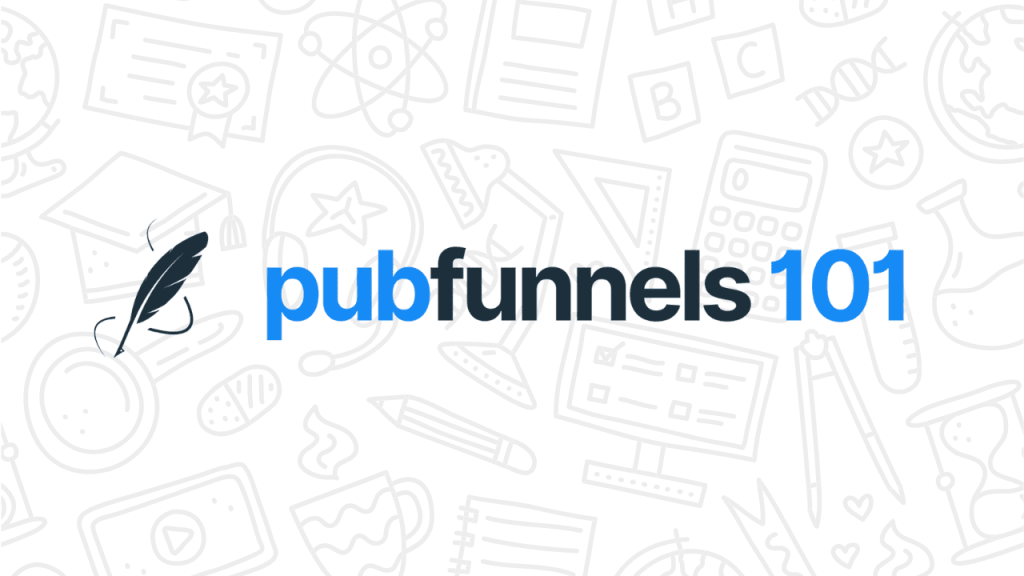
It’s a course already inside PubUniversity, but putting it front and center on the “Launchpad” page would help new users, in my opinion.
Taking it a step further, breaking Pubfunnels 101 into three different courses…
- Pubfunnels 101 (Beginners)
- Pubfunnels 102 (Intermediate Users)
- Pubfunnels 103 (Advanced Users)
…with each focusing on the sophistication level of its respective audience, would help the “overwhelm” as well.
Now, let’s answer the question you're probably asking…
How Much Does Pubfunnels Cost?
At the time of this writing, Pubfunnels has a “Founding Members” discount price.
For $99/month, you get…
- Unlimited websites & funnels
- Unlimited courses & memberships
- Unlimited contacts & blog posts
- AI-powered content generation (if you’re into that sort of thing)
- Zero product transaction fees
- Integrated chat support
…and everything else I discussed in this review.
If you pay annually, it'll be $990/year — basically two months free.
The only catch is you have to be on the monthly plan for at least one month before you’re allowed to upgrade to the annual plan (and get the extra discount).
If you tried to replicate every feature Pubfunnels offers with other tools (not that you'd need to replicate everything but let's say you did), you'd pay considerably more.
Here's the breakdown table featured on Pubfunnels' enrollment page:
That's quite a difference.
And as someone who's used many of those tools, I can tell you some of them tend to run even higher than what's shown on the chart.
(I'm looking at you, Zapier.)
After the “Founding Members” special is over, it’s my understanding that the price for Pubfunnels will rise to $129/month (for the monthly plan) and $1,299/year (for the annual plan).
Wrapping Up: Is Pubfunnels Worth It?
If you’re an author tired of duct-taping together landing pages, course platforms, schedulers, social planners, email tools, and more — Pubfunnels makes a strong case for itself.
Here’s why it stands out:
- It centralizes your business. One login. One dashboard. One place to run your author platform without juggling 5+ tools.
- It can save you money. If you're used to paying for those 5+ tools you juggle, Pubfunnels will be friendlier to your wallet.
- It’s built with authors in mind. From book funnel templates to course hosting, the features aren’t generic — they’re tailored.
- It saves time and tech headaches. You don’t have to be “techy” to use it. And if you are? You’ll appreciate how much busywork it takes off your plate.
That said, no platform is perfect.
There’s a learning curve with Pubfunnels, but they offer great support to guide you through it.
If you’ve liked what you’ve read and you’d like to learn more, click the button below to go to Pubfunnels’ site.
But either way, thanks for reading (and good luck)!


